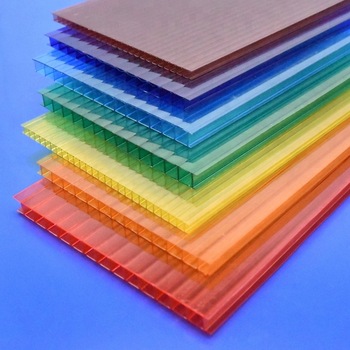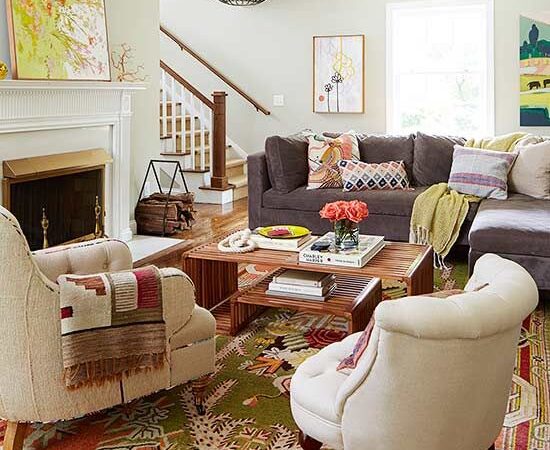Why Use Polycarbonate Roofing?

Polycarbonate roofing can make an excellent and environmentally-friendly architectural solution. Here are all the pros and cons of polycarbonate roofing panels.
Need an indestructible roof? Got a greenhouse project in mind? Have you considered using polycarbonate roofing?
In the construction business finding a material that has so many good properties is a rare thing. That’s why so many people are turning to polycarbonate roofing. From its UV resistance to its low weight, this material is perfect for greenhouses, garages, sheds, awnings, shelters, and much more.
There are lots of reasons why you should use a polycarbonate roof for your construction project. In fact, this amazing roofing material can be used for many different purposes.
We’ve put together a bunch of answers to the question of why you should use polycarbonate roofing.
The Pros
As a result of its many positive aspects, polycarbonate roofing suits a variety of uses. It’s a good idea to plan out your project and talk to experts who really understand the material’s properties. While you’re considering your options, read through this list of pros of polycarbonate roofing.
Virtually Unbreakable
It’s strong. Really strong. In fact, it’s close to unbreakable. So as a high-load-bearing roofing option it’s kind of hard to beat. You can even use it to cover a pool. No one will fall in when the cover is on!
UV Resistant
The resistance to UV rays makes polycarbonate panels perfect for greenhouses. The panels still let sunlight and heat through. Panels work well on greenhouses for sides as well as the roof.
You should definitely consider polycarbonate for any project where you want UV protection on the roof but you don’t want it dark inside.
Lightweight
Sheets of polycarbonate weigh roughly six times less than comparable pieces of glass. For an architect or designer that weight difference opens up many possibilities in their work.
These panels are so light that they don’t require special support structures or foundations. Again, this makes them ideal for roofing applications.
Multiple Finishes
You can request clear or opaque polycarbonate for your project. The plastic can also be tinted for colorful finishes. You could, for example, build a shed completely out of polycarbonate and use clear, glass-like finishes for windows, doors, and sunlights, and colored pieces for the walls and the rest of the roof.
Heat and Cold Resistant
Polycarbonate is extremely resistant to extreme heat and cold. It’s also, as you would expect from the roofing material, waterproof! When you combine its ability to handle all temperatures with its UV properties, you get a plastic that won’t fade or discolor.
And while we’re sort of discussing the weather, this plastic is also resistant to hail damage.
Insulation
This amazing plastic also has wonderful insulation properties. It’s better than glass at keeping the heat in. As we’ve mentioned already, greenhouses really benefit from polycarbonate as a building material. The insulation offered by this plastic is perfect for this application.
Flexibility
Because polycarbonate is plastic, manufacturers can shape it to pretty much any desired dimension. When you add all the other properties noted above, you’ve got a roofing product that you can use in man situations.
With so many pros to polycarbonate panels, we’re sure you’ll want to think about incorporating them wherever you can.
The Cons
No matter how good polycarbonate roofing is, there are still a couple of cons to consider. Even with these negatives, we’re pretty sure you’ll find lots to love about this material. Still, keep these two things in mind when making your decision.
High Cost
Great building materials that have so many benefits like polycarbonate just cost more. It’s a simple fact. In some cases, polycarbonate might be as much as double the cost of acrylic or glass.
Still, polycarbonate roofing panels come with a twenty-five-year life span. You may have to spend more upfront but it’s going to last and won’t look like it has aged much during that time either.
Even with these cons, this is a material that you should definitely consider using. The cost-benefit ratio is on the up-side and it is cheaper than glass.
Scratches and Dents
Perhaps the biggest downside to using polycarbonate panels is that while they can resist whatever mother nature throws at them, they don’t wear well when it comes to dents and scratches.
Hail won’t a breakthrough, but it can dent the plastic. If you bash into it with your wheelbarrow it won’t break, but you’ll leave a scratch.
For most roofing uses this con won’t be too much of an issue because it’s the roof and most people won’t see it. But if you need the benefit of its glass-like qualities and it starts getting scratched and dented you will lose a little see-through efficiency.
Choose Polycarbonate Roofing for Your Next Construction Project
As you can see, there are many reasons to use polycarbonate roofing panels for your project. As a result of their flexibility, they are also not limited simply to roofs. You can use them for a complete building such as a shed or a greenhouse.
When you’re working with an architect or construction company, be sure to ask them about using polycarbonate. They will likely appreciate the properties of the plastic and will be able to design the building to function as you need it.
These panels have been used all over the world for roofs.
We think that polycarbonate is a better choice than glass in many situations. We also know that many people have not have heard of these panels or considered how they might be used. That’s why we put this little guide together.
You now have all the pros and cons of polycarbonate to consider when thinking about the material for your roof. Get in touch with an expert to discuss how you can use this plastic for your project.
Make sure you check back often to never miss our latest!






